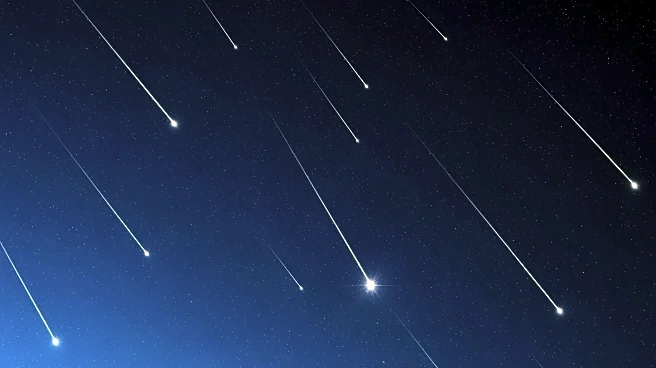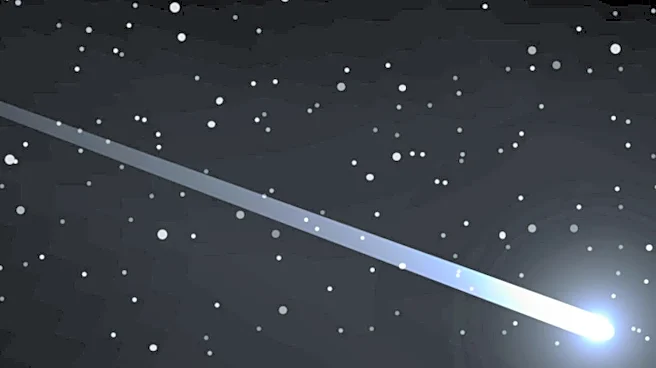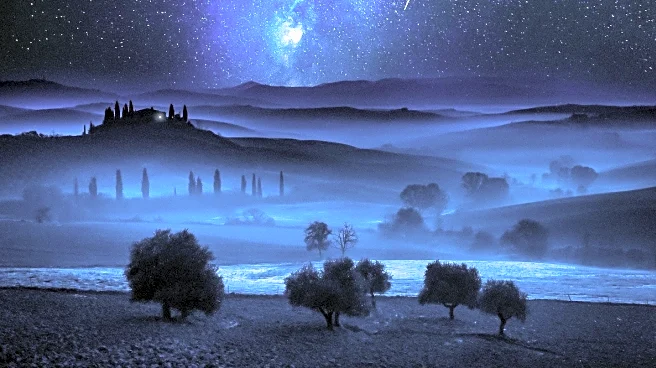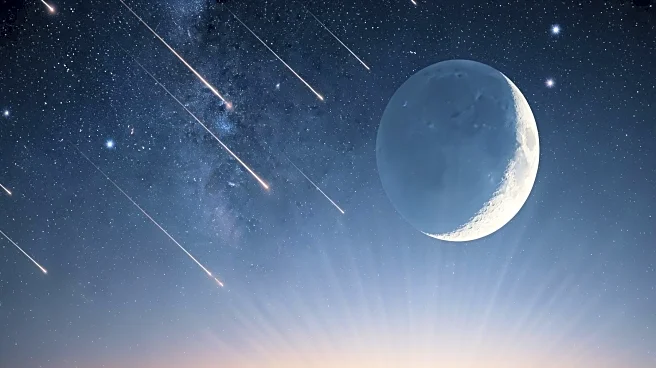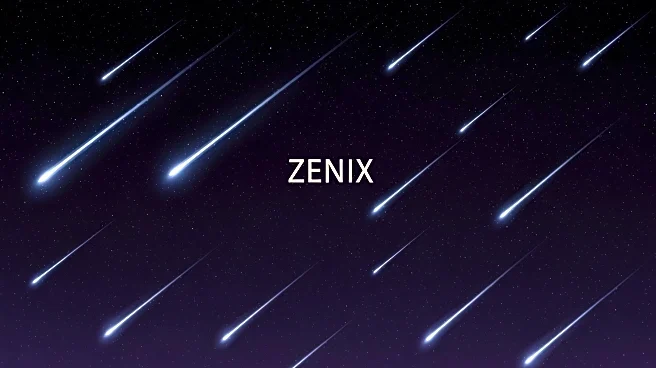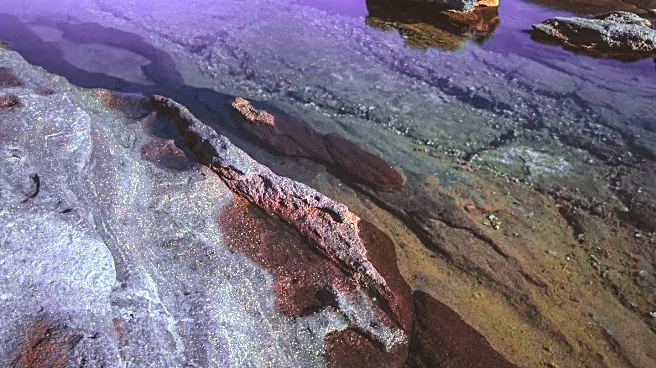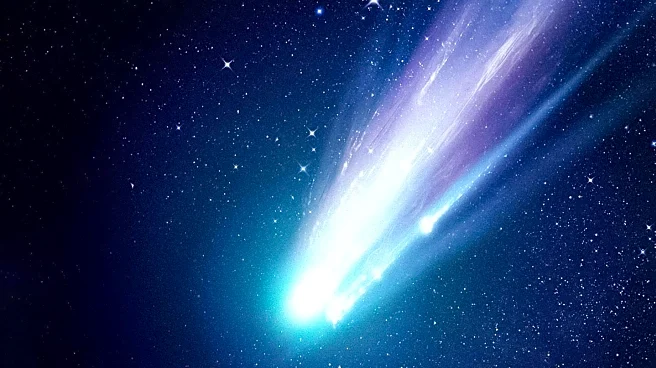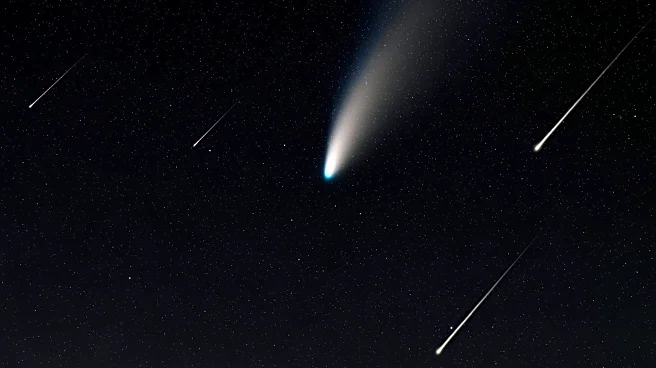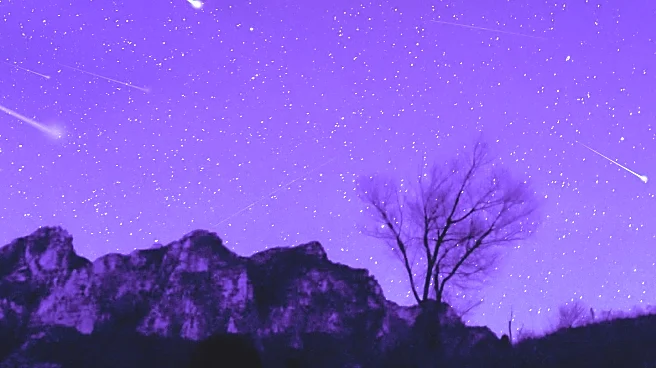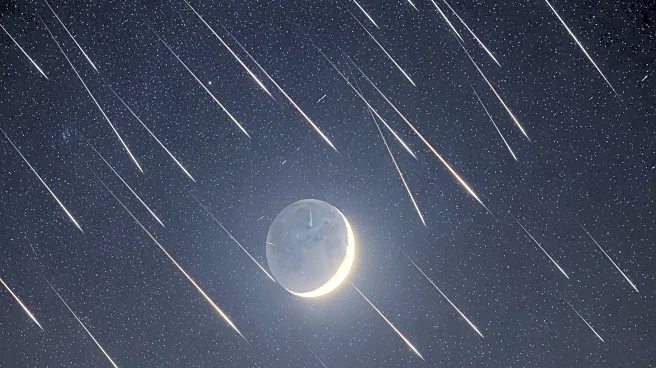What's Happening?
The Orionid meteor shower is set to peak tonight, October 21-22, 2025, providing a spectacular show for stargazers. This year's peak coincides with a new moon, ensuring the darkest possible sky for optimal
viewing. The Orionids, originating from debris left by Halley's Comet, can produce 10 to 20 meteors per hour under ideal conditions. Meteors will be visible throughout the night, with the best viewing after midnight when they appear higher in the sky. The shower will continue to be visible through October and into November.
Why It's Important?
Meteor showers like the Orionids offer accessible opportunities for public engagement with astronomy, requiring no special equipment beyond a dark sky. Such events can inspire interest in science and the natural world, potentially influencing educational pursuits and public appreciation for space exploration. The Orionids also highlight the ongoing impact of Halley's Comet, a significant celestial body that contributes to annual meteor displays. For the scientific community, these observations provide valuable data on meteor behavior and atmospheric interactions.
What's Next?
Stargazers can continue to observe the Orionid meteor shower throughout October and into November, with peak viewing conditions expected tonight. As the shower progresses, astronomers will analyze data collected during the peak to enhance understanding of meteor dynamics and their interactions with Earth's atmosphere. Public interest may lead to increased participation in astronomy-related activities and events, fostering community engagement with science.
Beyond the Headlines
The Orionid meteor shower may prompt discussions on the role of space exploration in scientific advancement and the allocation of resources for astronomical research. Ethical considerations regarding the prioritization of space missions versus other societal needs could arise, as the public weighs the benefits of scientific discovery against other priorities.
